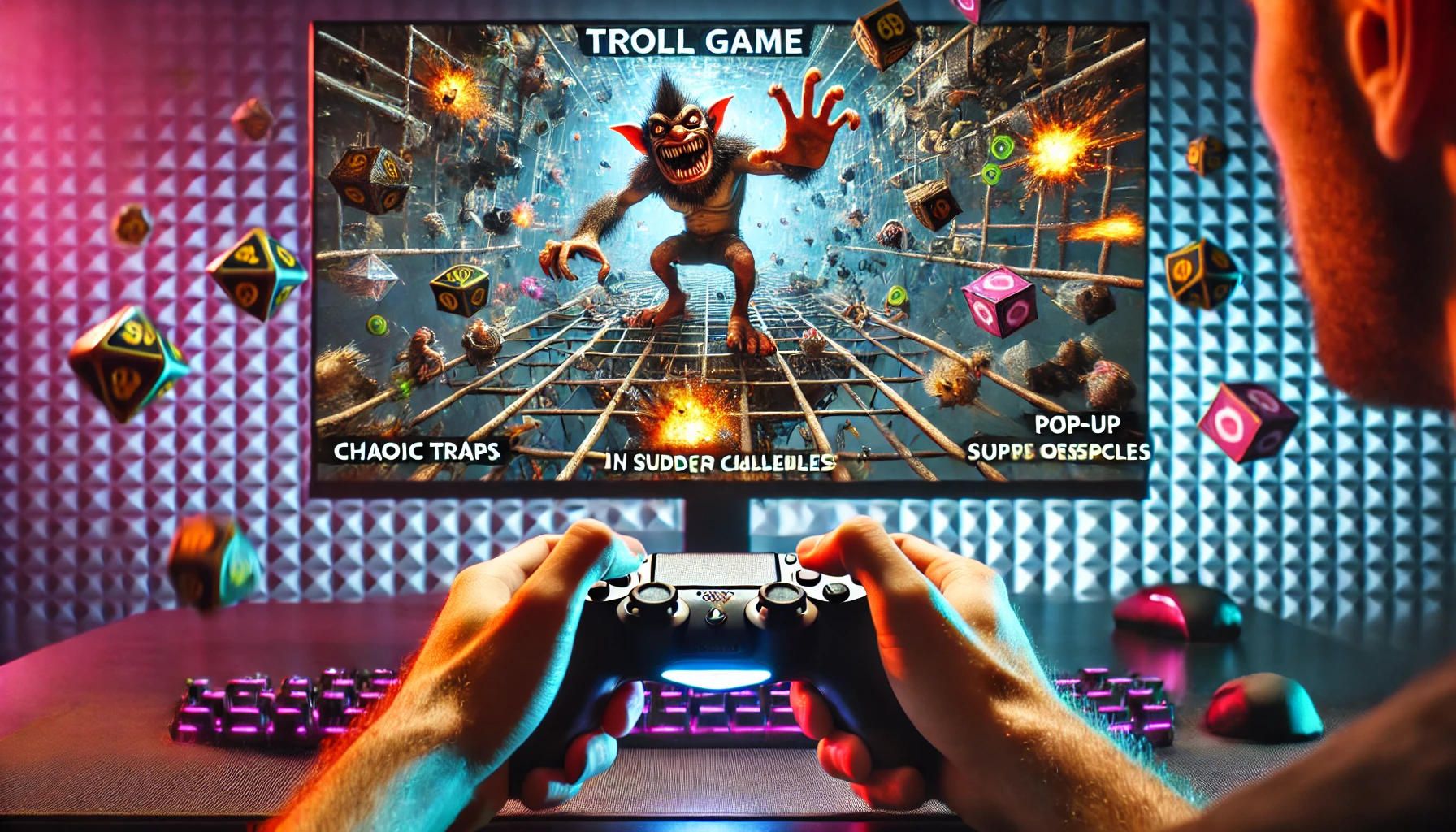Troll games, often categorized as unconventional or intentionally frustrating games, have gained a cult following in the gaming community. These games are designed to challenge players in unpredictable ways, often requiring quick reflexes, precise timing, and adaptability. But do they actually help improve reflexes? Let’s dive into the mechanics of troll games and their impact on reflex development.
What Are Troll Games?
Troll games are a genre of video games that purposefully break traditional gaming rules and expectations. They often employ deceptive mechanics, sudden difficulty spikes, and unexpected obstacles to keep players on their toes. Examples of such games include Getting Over It with Bennett Foddy, I Wanna Be the Guy, and Trap Adventure 2. These games demand patience, perseverance, and often quick reaction times to overcome their challenges.
How Do Reflexes Work in Gaming?
Reflexes in gaming refer to the ability to react quickly to on-screen events. This includes:
- Reaction Time: The speed at which a player responds to visual or auditory stimuli.
- Hand-Eye Coordination: The ability to translate what is seen on the screen into precise physical movements.
- Cognitive Adaptability: The ability to quickly adjust to changing scenarios or unexpected in-game events.
The Reflex-Boosting Elements of Troll Games
Troll games can improve reflexes in several ways:
1. Unpredictability Enhances Reaction Time
Unlike conventional games where players can anticipate patterns, troll games introduce sudden surprises that force players to react instantly. This unpredictability trains the brain to respond more rapidly to unexpected stimuli.
2. High Difficulty Requires Precision
Troll games often require precise movements to succeed. A single misstep can result in failure, forcing players to develop sharper reflexes to avoid traps and obstacles.
3. Trial and Error Reinforces Learning and Adaptation
Since many troll games are designed to be punishing, they encourage players to learn from their mistakes and adapt quickly. This enhances cognitive flexibility, which is crucial for improving reflexive responses.
4. Frustration Management and Mental Resilience
While not a direct reflex-related skill, the ability to maintain focus under pressure can indirectly enhance reaction time. Managing frustration and staying engaged despite setbacks trains players to stay alert and responsive.
Comparing Troll Games to Traditional Reflex-Enhancing Games
While troll games can improve reflexes, they may not be as effective as games specifically designed to enhance reaction speed. Here’s a comparison:
| Game Type | Primary Benefit | Reflex Improvement Potential |
|---|---|---|
| First-Person Shooters (FPS) | Fast-paced reaction training | High |
| Rhythm Games | Timing and coordination | High |
| Fighting Games | Predictive reflex sharpening | Medium-High |
| Troll Games | Unpredictability and adaptation | Medium |
Troll games excel at keeping players on edge, but their inconsistent challenge structures may not provide the systematic reflex training found in FPS or rhythm games.
Are Troll Games Worth It for Reflex Training?
If your main goal is to improve reflexes, troll games can certainly contribute, but they shouldn’t be your only method of training. They are excellent for enhancing adaptability, quick decision-making, and frustration tolerance, but they lack the structured reflex training seen in games like Counter-Strike or Osu!.
However, if you enjoy a unique challenge and want a fun way to sharpen your reactions while testing your patience, troll games might be a perfect addition to your gaming routine.
Conclusion
Troll games, while designed to frustrate and surprise players, can indeed help improve reflexes by forcing quick reactions, precise movements, and adaptability. However, their chaotic nature makes them a less structured tool for reflex training compared to FPS, rhythm, or fighting games. If you’re looking for an unconventional way to challenge your reflexes while having (or losing) fun, troll games are worth trying!

